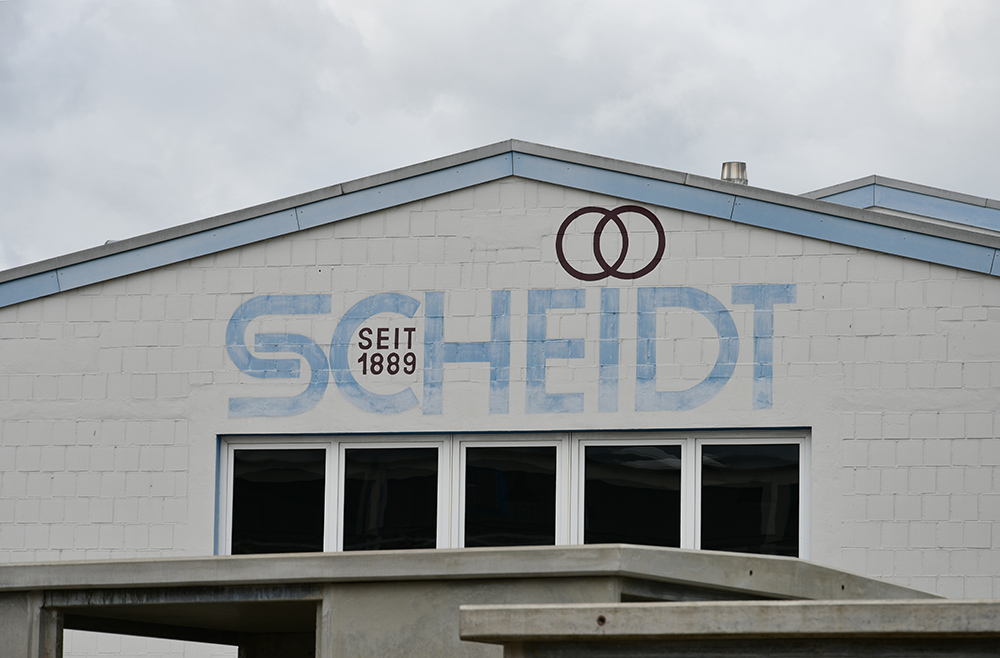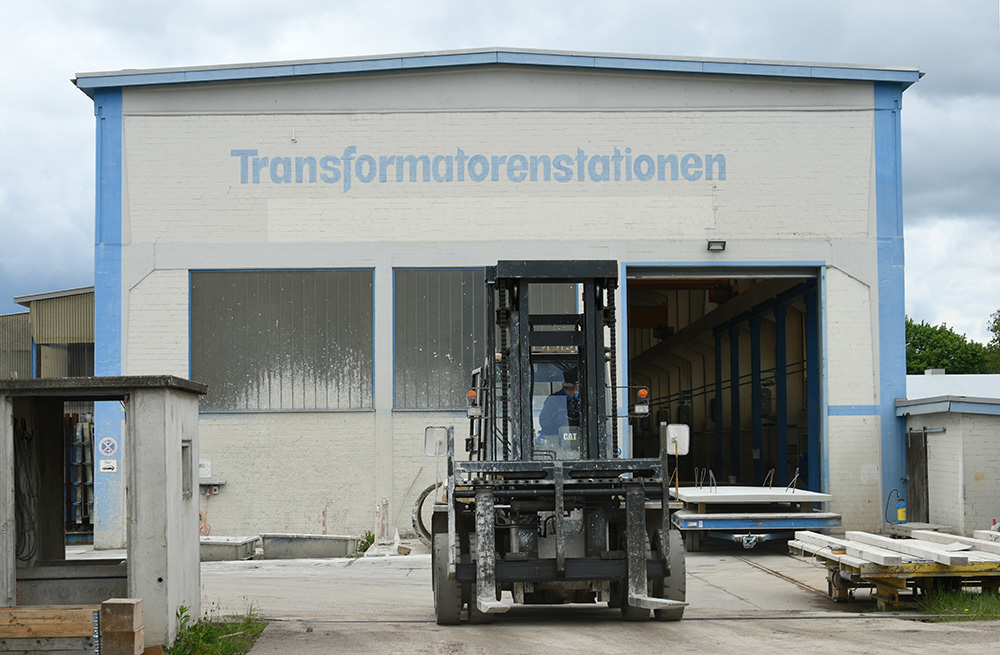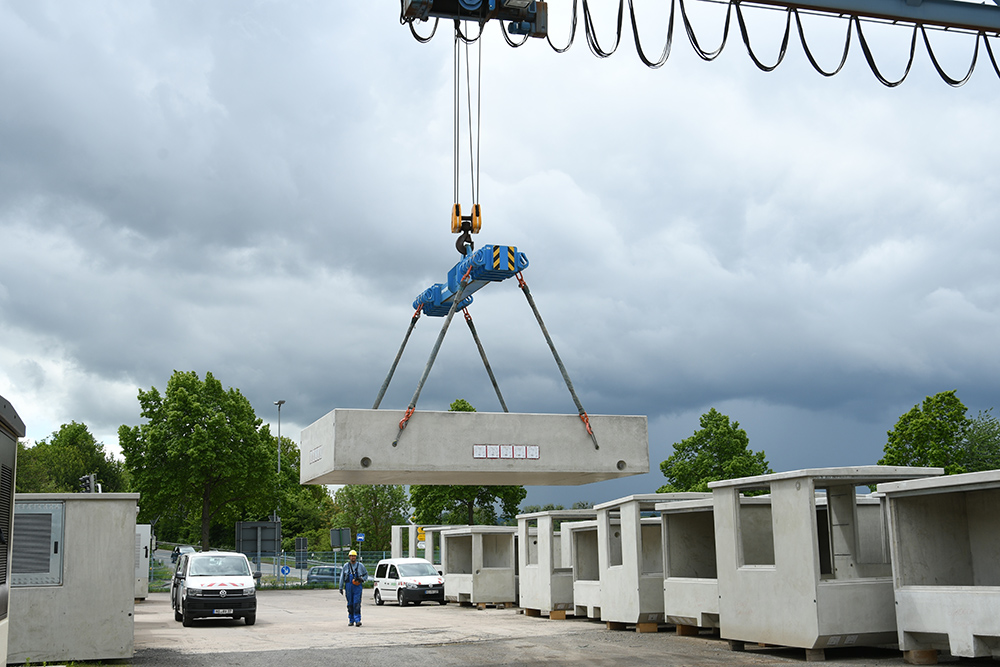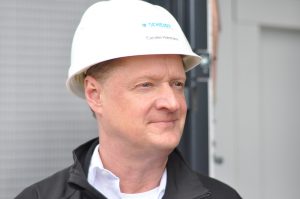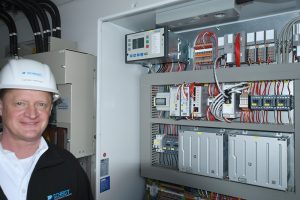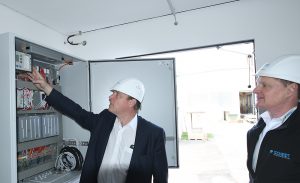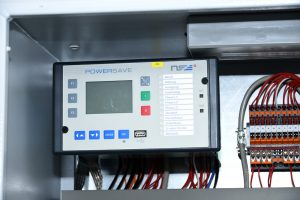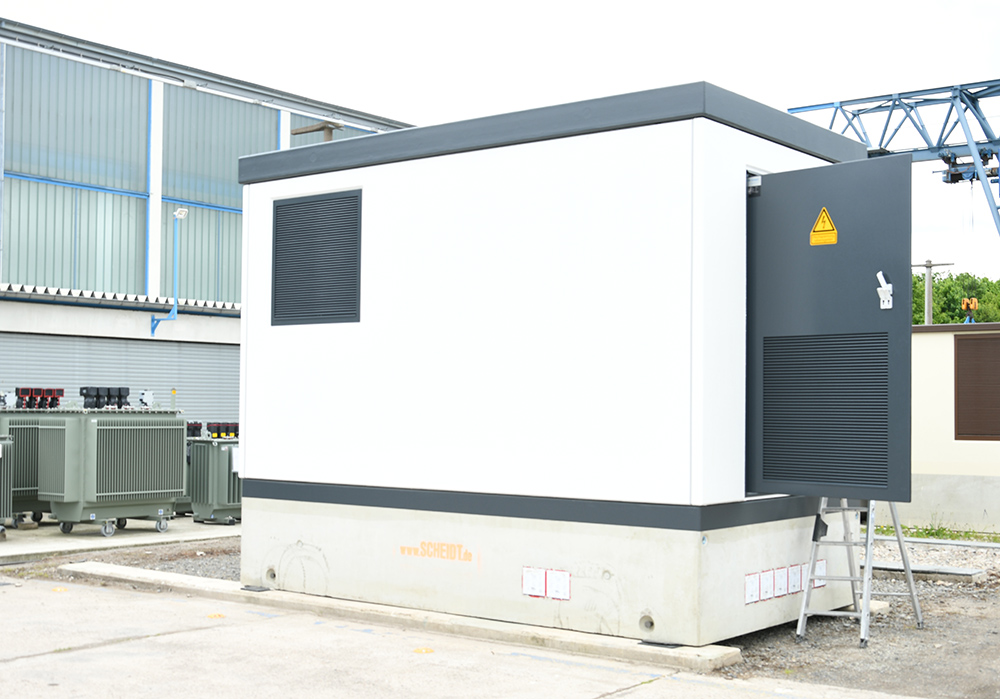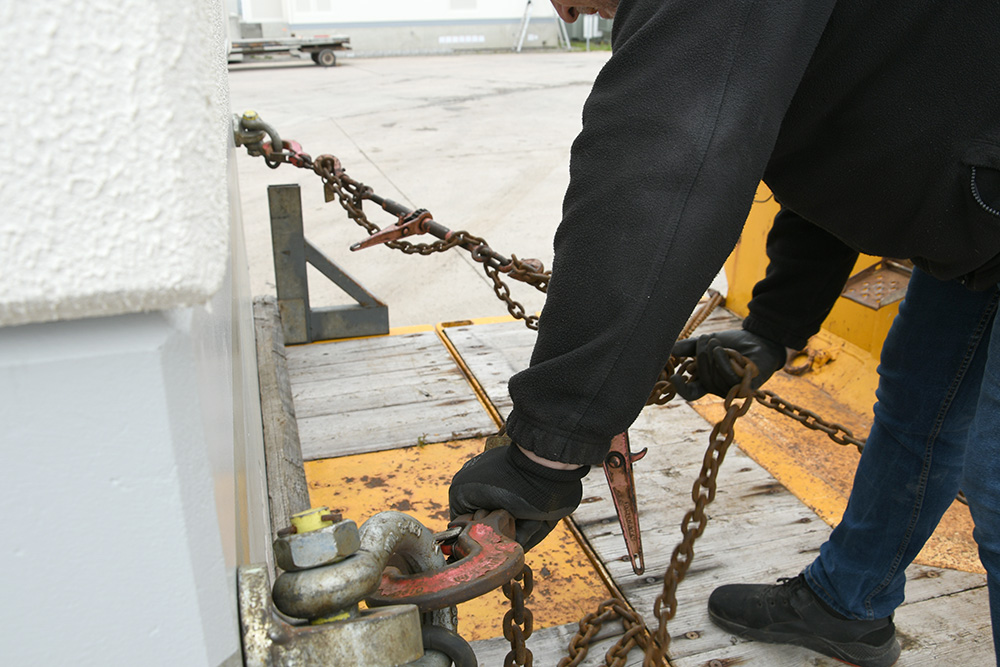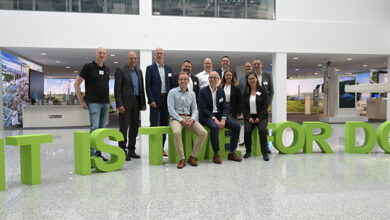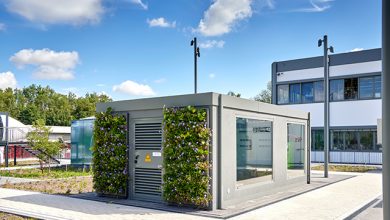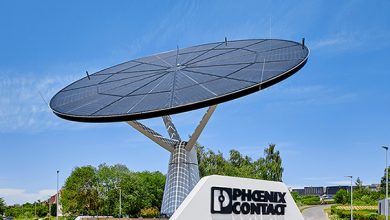They are gray, they are inconspicuous, they are everywhere – and when it comes to electricity, nothing works without them. There are around 600,000 transformer or local network stations in Germany. Hidden inside the mostly windowless concrete boxes is the technology without which the energy transition cannot work.
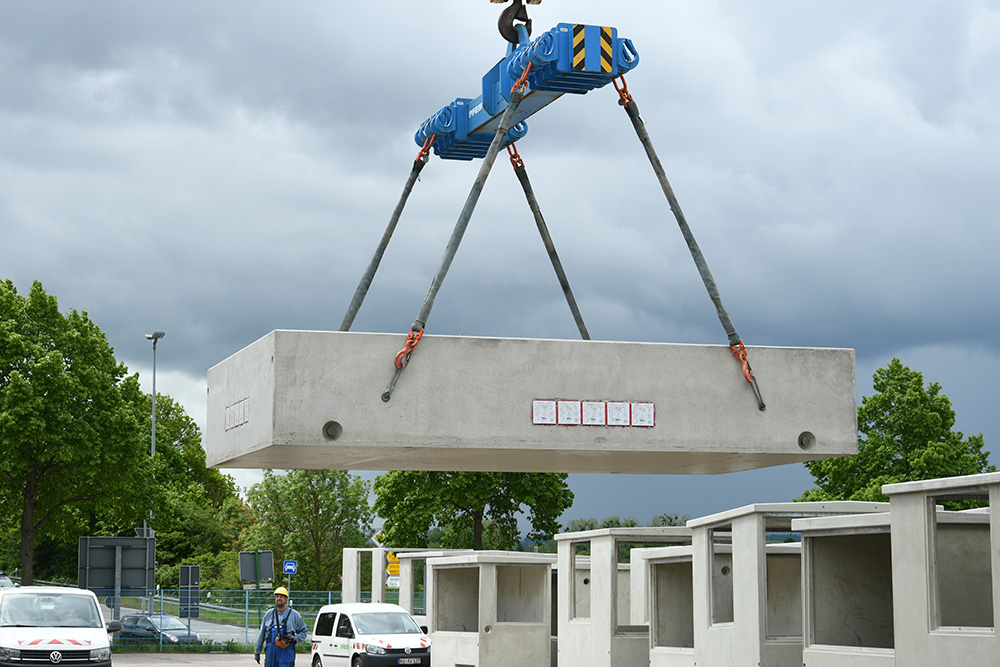
If there’s one company that knows a thing or two about local substations, it’s the Scheidt family business in Rinteln on the Weser River. The people from Lower Saxony not only have a practiced and skillful hand when it comes to constructing the concrete building, the basis of safe architecture around the energy networks. They are also experts when it comes to equipping the power bungalows, which weigh tons, with their electrical and electronic inner workings.
On-site appointment in Rinteln
Anyone who visits the company premises in Galgenfeld on the outskirts of this small town in Lower Saxony will involuntarily pull in their head at the heavy loads that float through the area. Helmets are compulsory when you’re out and about in the extensive outdoor area. At Scheidt, concrete is not only shaped, but also learns to fly. At least for short distances. Accordingly, discreetly helmeted, we meet Carsten Hohmann in front of the four-and-a-half-meter-long one-and-a-half-story machine that is Scheidt’s latest flagship. The company from Rinteln has developed an ingenious grid system that enables it to adapt its Tiny Houses precisely to site requirements even in the shell stage.
Turnkey transformer stations are the domain of the company, which was already founded in 1889. While at the beginning of the company’s history the focus was on quite normal construction projects, the production of concrete components became increasingly important, especially from the 1950s onwards. Even prefabricated garages were in the portfolio for a while. The first transformer stations from Scheidt found their place in these originally purely motor vehicle housings. Scheidt has an innovative relationship with concrete as a building material: Spun concrete was used to manufacture electricity pylons in Rinteln for many years.
Suspenseful
In the meantime, however, the three locations of the medium-sized company (Rinteln in Lower Saxony, Hoyerswerda in Saxony, Arnstadt in Thuringia) have concentrated on transformer stations in general and local network distribution stations in particular. Carsten Hohmann points to a whole row of largely still bare, since unfitted concrete shells: “Today, we are one of the most important manufacturers of transformer stations in Germany.”
So the shell has been cleared up, but what is actually inside the mostly inconspicuous buildings? The plant design engineer explains: “First of all, such a transformer station houses one or more transformers. These transformers regulate the current from its transport voltage of the medium-voltage network down to a consumer-friendly 380 volts in the low-voltage network. That’s because for electricity to flow at all over longer distances, the voltage must be at least 10,000 volts.”
And against the backdrop of the energy transition with its decentralized generators of solar and wind, generated electricity must also be transformed back up “ready for travel”. This calls for a new network architecture with numerous points where electricity must be adapted to the networks. No wonder that Scheidt sees itself as future-proof. In the meantime, also far beyond the national borders, both in England and in the EU environment.
Ready for connection
We take a look inside a finished transformer station. Hohmann explains: “In this station, there is an area where the electricity arrives. The technician points to the floor and then to the back wall: “This is where the transformer is. And then there’s a medium-voltage switchgear and a low-voltage distribution.”
Bernd Schairer looks after the Scheidt company as a field sales representative in Phoenix Contact’s specialist area of industrial management energy. He adds: “Scheidt offers its customers turnkey transformer stations. In other words, not only the concrete structure, but also the electrotechnical equipment at all network levels. That’s where we come in, because we are predestined for the network technology of energy suppliers with a number of products.”
The energy expert points to an imposing control cabinet inside the station: “Phoenix Contact ensures reliable control of the transformation here both with its new generation system controller (EZA) and with an innovative protection and control device. The controller was initially developed for solar farms and is gradually gaining acceptance in significantly more fields due to its features. In addition to this controller, our smartRTU telecontrol and automation platform ensures that the stations can be maintained remotely. Particularly against the backdrop of the energy transition with increasingly decentralized locations, it is becoming existentially important that the feed-in points in the energy networks can also be controlled remotely, i.e. by the network operators in their control rooms.”
With double bottom
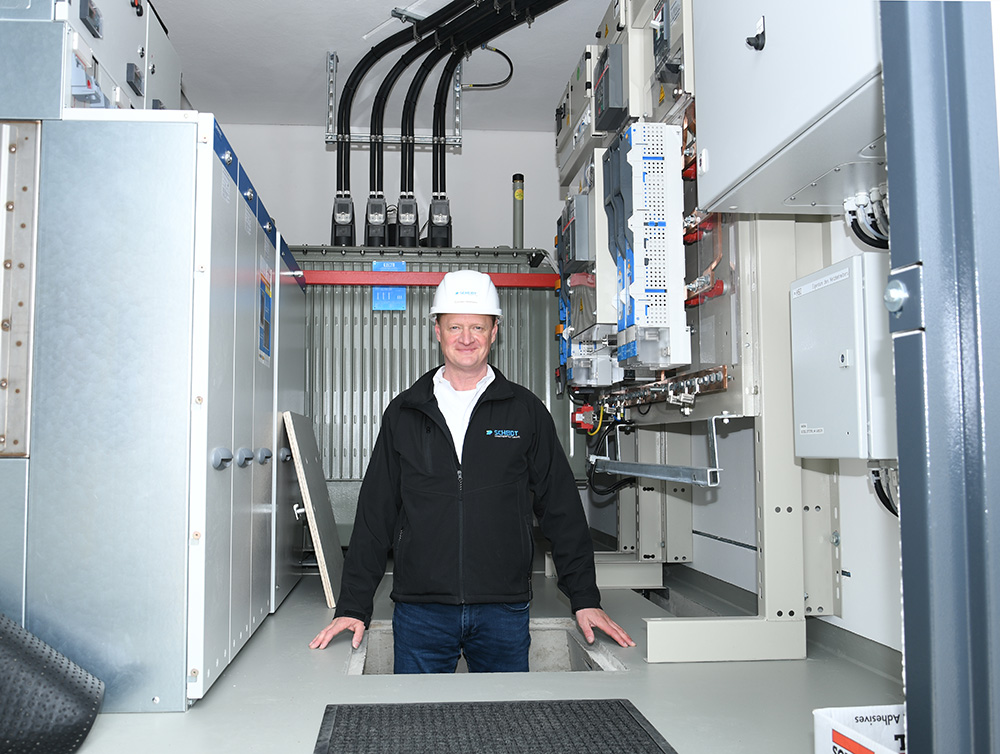
While steel hooks are already being attached to the finished structure outside, Carsten Hohmann is still demonstrating the inner values of the station. He climbs into the basement, where the underground cables arrive with medium voltage and ultimately leave as low voltage after the current makes its way through the transformer. “We have developed a modular system that allows us to use quite a few common parts, but still be extremely flexible to the customer’s requirements, and not only with the outer shell, but also the inner values. That’s what sets Scheidt apart.”
After we have left the walk-in transformer station, the chains of the lifting crane jerk into action. And one of the pacesetters of the energy transition is already floating gently onto the flatbed of a low-loader to make its way to its new location. Inconspicuous, angular, but full of inner values that make its use future-proof and indispensable for the coming decades.
